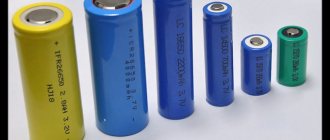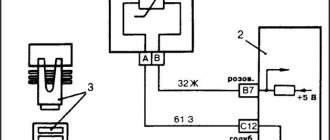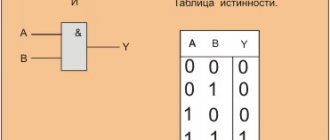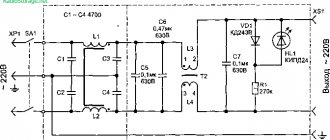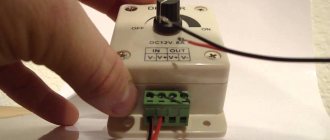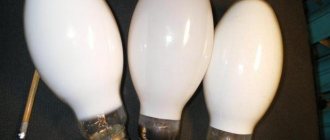Considering signals and types of signals, it must be said that there are different amounts of these connections. Every day, every person encounters the use of an electronic device. No one can imagine modern life without them. We are talking about the operation of a TV, radio, computer, and so on. Previously, no one thought about what signal is used in many operational devices. Now the words analog, digital and discrete have long been heard.
Not all, but some of the above signals are considered to be quite high quality and reliable. Digital transmission has not been used for as long as analogue. This is due to the fact that technology began to support this type only recently; this type of signal was also discovered relatively not so long ago. Every person encounters discreteness all the time. Speaking of signal processing types, it is necessary to recall that this one is a little intermittent.
If we delve deeper into science, it should be said that the transmission of information is discrete, which allows you to transfer data and change the time of the environment. Thanks to the last property, a discrete signal can take on any value. At the moment, this indicator is fading into the background, after most equipment began to be produced on chips.
Digital and other signals are integral, components interact with each other 100%. In discreteness, the opposite is true. The fact is that here each part works independently and is responsible for its functions separately.
Signal
Let's look at the types of communication signals a little later, but now you should get acquainted with what the signal itself is, in principle. This is a common code that is transmitted over the air by systems. This is a general type of formulation.
In the field of information and some other technologies, there is a special medium that allows messages to be transmitted. It can be created, but it cannot be accepted. In principle, some systems may accept it, but this is not required. If the signal is considered a message, then it is necessary to “catch” it.
Such a data transfer code can be called a regular mathematical function. It describes any change to the available parameters. If we consider radio engineering theory, it should be said that such options are considered basic. It should be noted that the concept of “noise” is similar to a signal.
It distorts it, can overlap with already transmitted code, and also represents a function of time itself. The article will describe signals and types of signals below; we are talking about discrete, analog and digital. Let's briefly consider the entire theory on the topic.
Signal Processing
Analog and digital signals are processed and directed to transmit and receive information encoded in the signal. Once information is extracted, it can be used for various purposes. In special cases, information is formatted.
Analog signals are amplified, filtered, modulated, and demodulated. Digital data can also be subject to compression, detection, etc.
Analog signal
Our senses perceive all information entering them in analog form. For example, if we see a car passing by, we see its movement continuously. If our brain could receive information about its position once every 10 seconds, people would constantly get run over. But we can estimate distance much faster and this distance is clearly defined at each moment of time.
Absolutely the same thing happens with other information, we can evaluate the volume at any moment, feel the pressure our fingers exert on objects, etc. In other words, almost all information that can arise in nature is analogue. The easiest way to transmit such information is through analog signals, which are continuous and defined at any time.
To understand what an analog electrical signal looks like, you can imagine a graph that shows amplitude on the vertical axis and time on the horizontal axis. If we, for example, measure the change in temperature, then a continuous line will appear on the graph, displaying its value at each moment in time. To transmit such a signal using electric current, we need to compare the temperature value with the voltage value. So, for example, 35.342 degrees Celsius can be encoded as a voltage of 3.5342 V.
Analog signals used to be used in all types of communications. To avoid interference, such a signal must be amplified. The higher the noise level, that is, interference, the more the signal must be amplified so that it can be received without distortion. This method of signal processing spends a lot of energy generating heat. In this case, the amplified signal may itself cause interference for other communication channels.
Nowadays, analog signals are still used in television and radio, to convert the input signal in microphones. But in general, this type of signal is being replaced or replaced by digital signals everywhere.
Digital signal
A digital signal is represented by a sequence of digital values. The most commonly used signals today are binary digital signals, as they are used in binary electronics and are easier to encode.
Unlike the previous signal type, a digital signal has two values “1” and “0”. If we remember our example with temperature measurement, then the signal will be generated differently. If the voltage supplied by the analog signal corresponds to the value of the measured temperature, then a certain number of voltage pulses will be supplied in the digital signal for each temperature value. The voltage pulse itself will be equal to “1”, and the absence of voltage will be “0”. The receiving equipment will decode the pulses and restore the original data.
Having imagined what a digital signal will look like on a graph, we will see that the transition from zero to maximum is abrupt. It is this feature that allows the receiving equipment to “see” the signal more clearly. If any interference occurs, it is easier for the receiver to decode the signal than with analog transmission.
However, it is impossible to restore a digital signal with a very high noise level, while it is still possible to “extract” information from an analog type with large distortion. This is due to the cliff effect. The essence of the effect is that digital signals can be transmitted over certain distances, and then simply stop. This effect occurs everywhere and is solved by simply regenerating the signal. Where the signal breaks, you need to insert a repeater or reduce the length of the communication line. The repeater does not amplify the signal, but recognizes its original form and produces an exact copy of it and can be used in any way in the circuit. Such signal repetition methods are actively used in network technologies.
Among other things, analog and digital signals also differ in the ability to encode and encrypt information. This is one of the reasons for the transition of mobile communications to digital.
Analog and digital signal and digital-to-analog conversion
We need to talk a little more about how analog information is transmitted over digital communication channels. Let's use examples again. As already mentioned, sound is an analog signal.
What happens in mobile phones that transmit information via digital channels
Sound entering the microphone undergoes analog-to-digital conversion (ADC). This process consists of 3 steps. Individual signal values are taken at equal intervals of time, a process called sampling. According to Kotelnikov’s theorem on channel capacity, the frequency of taking these values should be twice as high as the highest signal frequency. That is, if our channel has a frequency limit of 4 kHz, then the sampling frequency will be 8 kHz.
Next, all selected signal values are rounded or, in other words, quantized. The more levels created, the higher the accuracy of the reconstructed signal at the receiver. All values are then converted into binary code, which is transmitted to the base station and then reaches the other party, which is the receiver. A digital-to-analog conversion (DAC) procedure takes place in the receiver's phone. This is a reverse procedure, the goal of which is to obtain a signal at the output that is as identical as possible to the original one. Next, the analog signal comes out in the form of sound from the phone speaker.
Types of signals
There are several types, as well as classifications of existing signals. Let's look at them.
The first type is an electrical signal, there are also optical, electromagnetic and acoustic. There are several other similar types, but they are not popular. This classification occurs according to the physical environment.
According to the method of setting the signal, they are divided into regular and irregular. The first type has an analytical function, as well as a deterministic type of data transfer. Random signals can be generated using some theories from higher mathematics, moreover, they are capable of taking on many values in completely different periods of time.
The types of signal transmission are quite different; it should be noted that signals according to this classification are divided into analog, discrete and digital. Often these signals are used to ensure the operation of electrical appliances. In order to understand each of the options, you need to remember the school physics course and read a little theory.
Electrical signal
But what is an electrical signal? I am tormented by vague doubts that somewhere there is an electric current involved :-). How is electric current characterized? Well, of course, voltage and current. The most remarkable thing is that electric current is very convenient to transmit through space using wires. In this case, its speed of propagation will be equal to the speed of light. Although the electrons in the conductor move at a speed of only a few millimeters per second, the electric field immediately covers the entire wire at the speed of light! And as you remember, the speed of light is 300,000 kilometers per second! Therefore, the electron at the other end of the wire will almost immediately begin to move.
Why is the signal processed?
The signal must be processed in order to obtain the information that is encrypted in it. If we consider the types of signal modulation, it should be noted that in terms of amplitude and frequency shift keying, this is a rather complex process that must be fully understood. Once the information is obtained, it can be used in completely different ways. In some situations, it is formatted and sent further.
It is also worth noting other reasons why signal processing occurs. It consists in compressing the frequencies that are transmitted, but without damaging all the information. Then it is formatted again and transmitted. This is done at slow speeds. If we talk about analog and digital signals, then special methods are used here. There is filtering, convolution and some other functions. They are needed to restore information if the signal is damaged.
Signal parameters
- Signal strength
- Specific signal energy
- The duration of the signal determines the time interval during which the signal exists (other than zero);
- Dynamic range is the ratio of the highest instantaneous signal power to the lowest:
- Signal spectrum width is the frequency band within which the main signal energy is concentrated;
- The signal base is the product of the signal duration and the width of its spectrum. It should be noted that there is an inversely proportional relationship between the width of the spectrum and the duration of the signal: the shorter the spectrum, the longer the duration of the signal. Thus, the size of the base remains practically unchanged;
- The signal-to-noise ratio is equal to the ratio of the useful signal power to the noise power;
- The volume of transmitted information characterizes the communication channel bandwidth required for signal transmission. It is defined as the product of the signal spectrum width and its duration and dynamic range:
Parameters of the periodic pulse signal:
- amplitude Ut – the largest of the instantaneous values (over the repetition period T);
- repetition period T – time interval from any instantaneous signal value to the next instantaneous signal value of the same level (for one value of the derivative);
- repetition frequency f – number of oscillation periods per 1 s;
- pulse duration i – time interval at the level of 0.5 Um;
- leading edge
– time interval during which the signal increases from the level of 0.1 Um to the level of 0.9 Um; - trailing edge (cut)
– time interval during which the signal decreases from the level of 0.9 Um to the level of 0.1 Um;
Sometimes the pulse duration is indicated at a certain specified level, for example, at the level of 0.1 Um -
.
A pulse signal is considered rectangular if the duration of the flat part at the Um level is more than three durations
.
In Fig. Figure 1.14 shows a periodically repeating pulse signal of positive polarity.
Figure 1.14 – Parameters of a periodic pulse signal
Measuring the period and frequency of a signal
By definition (see Fig. 1), period T is the smallest time interval through which a periodic signal repeats its values. Frequency f is equal to the number of periods per unit time. Frequency is related to periods by a simple inverse relationship f = 1/T, therefore, having measured the period, it is easy to calculate the inverse value - frequency, and vice versa.
Figure 1 – Gating method for measuring signal period
Creation and formatting
Many types of information signals that we will talk about in the article need to be created and then formatted. To do this, you must have a digital-to-analog converter, as well as an analog-to-digital converter. As a rule, they are both used in the same situation: only in the case of using a technique such as DSP.
In other cases, only the first device will do. In order to create physical analog codes and then reformat them into digital methods, it is necessary to use special devices. This will prevent damage to information as much as possible.
Private information
Signal and event
An event (receiving a note, observing a signal flare, receiving a symbol by telegraph) is a signal only in the system of relations in which the message is recognized as significant (for example, in combat conditions, a signal flare is an event that is significant only for the observer to whom it is addressed). It is obvious that a signal defined analytically is not an event and does not carry information if the function of the signal and its parameters are known to the observer.
In technology, a signal is always an event. In other words, an event - a change in the state of any component of a technical system, recognized by the logic of the system as significant, is a signal. An event that is not recognized by a given system of logical or technical relations as significant is not a signal.
Signal representation and spectrum
There are two ways to represent a signal depending on the domain of definition: time and frequency. In the first case, the signal is represented by a function of time {\displaystyle s(t)} characterizing the change in its parameter.
In addition to the usual temporal representation of signals and functions, the description of signals by frequency functions is widely used in data analysis and processing. Indeed, any signal, no matter how complex in its form, can be represented as a sum of simpler signals, and, in particular, as a sum of the simplest harmonic oscillations, the totality of which is called the frequency spectrum of the signal.
To switch to the frequency representation method, the Fourier transform is used:
.
The function is called spectral function or spectral density. Since the spectral function is complex, we can talk about the amplitude spectrum and phase spectrum.
The physical meaning of the spectral function: the signal is represented as the sum of an infinite series of harmonic components (sinusoids) with amplitudes continuously filling the frequency interval from to and initial phases.
The dimension of the spectral function is the dimension of the signal multiplied by time.
In radio engineering
In radio engineering, the main element of coding is signal modulation. In this case, a close to harmonic signal of the form s(t) = A sin(2πf t + φ) is usually considered, where the amplitude A, frequency f or phase φ slowly (relative to the rate of change of the sine) changes depending on the transmitted information (amplitude, frequency or phase modulation, respectively).
Stochastic signal models assume that either the signal itself or the information it carries is random. A stochastic signal model is often formulated as an equation relating the signal to noise, which in this case simulates the set of possible information messages and is called shaping noise, as opposed to nuisance observation noise.
A generalization of the scalar signal model are, for example, vector signal models, which are ordered sets of individual scalar functions, with a certain relationship of the vector components with each other. In practice, the vector model corresponds, in particular, to the simultaneous reception of a signal by several receivers with subsequent joint processing. Another extension of the concept of a signal is its generalization to the case of fields.
Dynamic range
The range of any type of analog signal is easy to calculate. It is necessary to use the difference between higher and lower volume levels, which is shown in decibels.
It should be noted that the information depends entirely on the characteristics of its execution. Moreover, we are talking about both music and the conversations of ordinary people. If we take an announcer who will read the news, then his dynamic range will be no more than 30 decibels. And if you read any work in color, then this figure will increase to 50.
Definitions
In addition to the encyclopedic definition given above, there are many other definitions of the term “signal” in classical literature.
“Usually, a signal is understood as a quantity that in some way reflects the state of a physical system. In this sense, it is natural to consider the signal as the result of some measurements carried out on a physical system in the process of its observation.”
“A signal can be defined as a function that conveys information about the state or behavior of a physical system. (…) Mathematically, signals are represented as functions of one or more independent variables.”
“A signal is a time-varying physical quantity described by a function of time. One of the parameters of this function contains information about another physical quantity. This signal (function) parameter is called informative, and the physical quantity by which the signal is represented is called the signal carrier (signal carrier); the signal has the dimension of this quantity.”
“A signal is usually called something that carries some kind of data.”
Analog signal
The types of presentation of the satisfied signal are different. It should be noted that the analog signal is continuous. If we talk about the disadvantages, many note the presence of noise, which can, unfortunately, lead to loss of information.
Quite often a situation arises where it is unclear where in the code there is really important information and where there are simply distortions. It is because of this that the analog signal has become less popular, and at the moment it is being replaced by digital technology.
What is a signal?
A signal is something that can be transmitted through space and time. So, what conditions must exist to call a signal a “signal”?
Firstly, the signal must be created (generated) by someone.
Secondly, the signal must be intended for whom.
Thirdly, someone must accept this signal and draw some conclusions for themselves, that is, interpret the signal correctly.
Let's plunge into the Wild West.
I think it's no secret that the Indians lit a fire, and the smoke from the fire was used to transmit a signal. This means that in our case the fire is a signal generator. So, the first point works). Who was the smoke from the fire intended for? For cowboys? Of course not! For our own Indians. So point two works. Okay, you saw two columns of smoke rising into the sky. Does this mean anything to you? Someone is probably grilling kebabs? May be. But if you approach these fires, they will make a shashlik out of you). For the Indians, these two columns of smoke meant that their detachment had successfully hunted the cowboys ;-). Well, the third rule has been fulfilled ;-).
Digital signal
It should be noted that such a signal, like other types of signals, is a data stream that is described by discrete characteristics.
It should be noted that its amplitude can be repeated. If the analogue version described above is capable of arriving at the end point with a huge amount of noise, then the digital version does not allow this. It is able to independently eliminate most of the interference in order to avoid damage to information. It should also be noted that this type conveys information without any semantic loads.
Thus, a user can easily send multiple messages through one physical channel. It should be noted that, unlike the types of sound signal that are the most common at the moment, as well as analog, digital is not divided into several types. He is unique and independent. Represents a binary stream. Now it is quite popular, it is easy to use, as evidenced by reviews.
Transmission of electrical signals
So, we will use wires to transmit a signal through space. A little higher we examined the conditions for the occurrence of a signal. So, first of all, we need a generator of these signals! That is, it could be some kind of battery or circuit that would generate electric current. Next, there must be someone who would receive this signal. This could be some kind of load, such as a light bulb, a heating element, or an entire circuit that would receive this signal. And thirdly, the load must somehow react to this signal. The light bulb must emit light, the heating element must warm up, and the circuit must perform some function.
As you understand from all of the above, the main trump card of a signal is its generator. So, as we have already discussed, two parameters of electric current can be transmitted through wires - voltage and current. That is, we can create a generator that would change either its voltage or current in the load, which would cling through the wires to this generator. Basically, in electronics it is the “voltage” parameter that is used, since the voltage is easy to obtain and change its value.
Application of digital signal
Considering the types of signal transmission, it is necessary to say where the digital option is used. How does it differ from many others in transmission and use? The fact is that upon entering the repeater, it is completely regenerated.
When the equipment receives a signal that has received noise and interference during transmission, it is immediately formatted. Thanks to this, TV towers can regenerate the signal, avoiding the use of noise effect.
In this case, analog communication will be much better, since when receiving information with a large amount of distortion, it can be extracted at least partially. If we talk about the digital version, then this is impossible. If more than 50% of the signal has noise, then we can assume that the information is completely lost.
Many people, discussing cellular communications, of completely different formats and transmission methods, said that sometimes it is almost impossible to talk. People may not hear words or phrases. This can only happen on a digital line if there is noise.
If we talk about analog communications, then in this case the conversation can be continued further. Due to such problems, repeaters always generate a new signal in order to reduce gaps.
Which communication systems use a digital signal and which analog?
Despite its archaic nature, analogue technology is still used for telephone and radio communications. Many wired networks are still analog. These are mainly traditional telephone lines of local operators. But digital channels are already widely used for backbone data transmission. Analogue technology is also used in simple and cheap portable radio stations.
All newly created systems use digital signal processing technology. These are fiber optic and wire lines, signaling and telemetry, military and civil industrial communications. And of course, television is switching to digital broadcasting. The analogue method of data transmission has exhausted itself. It has been replaced by a new high-quality and secure connection.
Discrete signal
Currently, a person uses various dialers or other electronic devices that receive signals. The types of signals are quite diverse, and one of them is discrete. It should be noted that in order for such devices to work, it is necessary to transmit an audio signal. That is why a channel is needed that has a much higher level of throughput than was previously described.
What is this connected with? The fact is that in order to transmit quality sound, it is necessary to use a discrete signal. It does not create a wave of sound, but a digital copy of it. Accordingly, the transmission comes from the technology itself. The advantages of such a transfer are that batch sending will be carried out in batches, and the amount of transmitted data will be reduced.
Time and electrical signal
As I said, the signal is transmitted in time and space. That is, time is an important parameter for an electrical signal. Now we will have to sweat a little and remember the mathematics and physics course for high school. Let's remember the Cartesian coordinate system. As you remember, we plotted the Y axis vertically and the X axis horizontally:
In electronics and electrical engineering, we plot time along X, let's call it t, and vertically we plot voltage, call it U. As a result, our coordinate system will look like this:
A device that shows us the change in voltage over time is called an oscilloscope, and a graph of this voltage is called an oscillogram. The oscilloscope can be digital:
or analog:
Types of modulation
While describing the types of signals and signals in general, it is also necessary to talk about modulation. What it is? This is the process of changing several vibration parameters at once, which are carried out according to a certain law. It should be noted that modulation is divided into digital and pulse, as well as some others.
In turn, many of them are divided separately into several types, and there are quite a lot of them. It should be said about the main characteristics of this concept. For example, due to the types of signal modulation, it is possible to achieve stable transmission and minimal loss, but it should be noted that each of them requires a special linearity amplifier.
Signal characteristics
The signal characteristics formally specified in GOST are as follows.
Pulse Characteristics
- The spectral function of momentum is a complex function representing the Fourier transform of momentum.
- Pulse spectral function module
- Momentum Spectral Function Argument
Characteristics of periodic signals
- The period of a periodic signal is a parameter equal to the shortest time interval through which the instantaneous values of a periodic signal are repeated.
- The frequency of a periodic signal is a parameter that is the reciprocal of the period of a periodic signal.
- Complex spectrum of a periodic signal - A complex function of a discrete argument equal to an integer number of frequency values of a periodic signal, representing the values of the coefficients of the complex Fourier series for a periodic signal.
- Amplitude spectrum of a periodic signal - A discrete argument function representing the module of the complex spectrum of a periodic signal.
- The phase spectrum of a periodic signal is a function of a discrete argument, which is an argument of the complex spectrum of a periodic signal.
- Harmonic is a harmonic signal with an amplitude and initial phase equal, respectively, to the values of the amplitude and phase spectrum of the periodic signal at a certain value of the argument.
Characteristics of random signals
- One-dimensional probability density is a function equal to the limit of the ratio of the probability of a random signal being in a certain interval of values to the width of this interval as it tends to zero, and its argument is the value to which the interval shrinks
- The correlation function is a function equal to the average value of the product of the variable component of a random signal and the same variable component, but delayed by a given time.
- Normalized correlation function - a function equal to the ratio of the correlation function of a random signal to its variance
- Energy spectrum is a function that is the Fourier transform of the correlation function, the argument of which is frequency
Characteristics of signal interaction
- The signal-to-interference ratio is the ratio of quantities characterizing the intensity of the signal and the interference.
- “Up” modulation coefficient is a coefficient equal to the ratio of the peak “up” deviation of the modulation law to its constant component during amplitude modulation.
- “Down” modulation coefficient is a coefficient equal to the ratio of the peak “down” deviation of the modulation law to its constant component during amplitude modulation.
- Frequency deviation “up” is the peak deviation “up” of the modulation law during frequency modulation.
- Frequency deviation “down” is the peak deviation “down” of the modulation law during frequency modulation.
- Angular modulation index - peak deviation of the modulation law of a phase-modulated signal with a harmonic modulation law
Signal Interconnection Characteristics
- Cross-correlation function is a function equal to the average value of the product of the variable component of one random signal and the variable component of another random signal delayed by a specified time.
- Cross energy spectrum - A function that is the Fourier transform of a cross-correlation function whose argument is frequency
- Delay time is a parameter equal to the value of the time shift of one of the signals, at which its identical equality to the other signal is achieved up to a constant multiplier and a constant term.
- Phase shift is the magnitude of the difference between the initial phases of two harmonic signals of the same frequency.
Signal Distortion Characteristics
- Harmonic coefficient is a coefficient characterizing the difference between the shape of a given periodic signal and the harmonic one, equal to the ratio of the root mean square voltage of the sum of all harmonics of the signal, except the first, to the root mean square voltage of the first harmonic.
- The relative deviation of a signal from the linear law is a coefficient equal to the ratio of the absolute deviation (40) of a given signal from a straight line connecting the instantaneous signal values corresponding to the beginning and end of a given time interval to the maximum signal value in the same interval
- The signal nonlinearity coefficient is a coefficient equal to the ratio of the peak-to-peak derivative of the signal over a given time interval to the maximum value of the derivative over the same interval.
- The absolute deviation of signals is the maximum value of the difference between the instantaneous values of signals taken at the same point in time over a given time interval.
Energy and strength
Based on signal strength, practical signals can be divided into two categories: energetic signals and powerful signals. [14]
Energy signals: these signals have energy equal to a finite positive value, but their average powers are equal to 0;
Power signals: The average power of these signals is a finite positive value, but their energy is infinite.
t}
Deterministic and random
Deterministic signals are those whose values are predictable at any time and can be calculated using a mathematical equation.
Random signals are signals that take on random values at any given time and must be modeled stochastically. [15
see also
- Connection
- Code
- Modulation
- Analog-to-digital converter
- Signal to noise ratio
- Sign
- Information
- Message
I hope this article about the signal was interesting to you and not as difficult to understand as it might seem, good luck in your endeavors! I hope that now you understand what a signal is, an analog signal, a digital signal, signal characteristics and what all this is needed for, and if you don’t understand, or have any comments, then don’t hesitate to write or ask in the comments, I will be happy to answer. In order to gain a deeper understanding, I strongly recommend that you study all the information from the category METROLOGY AND ELECTRORADIO MEASUREMENTS
